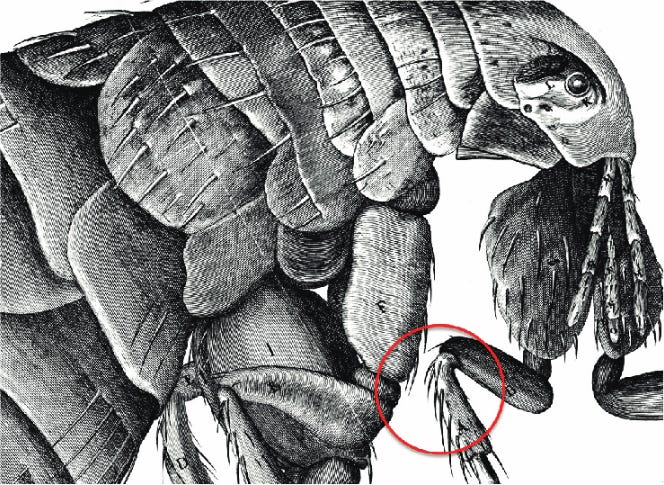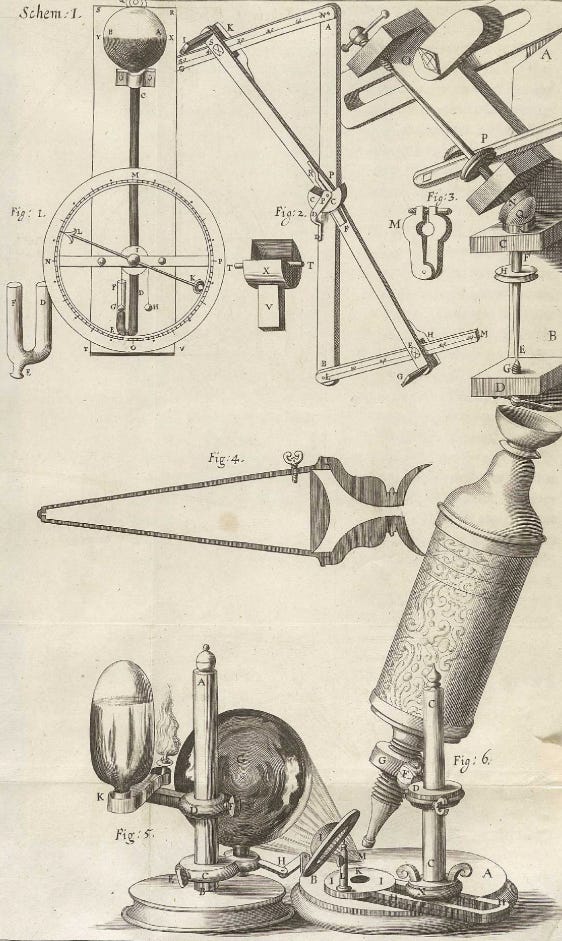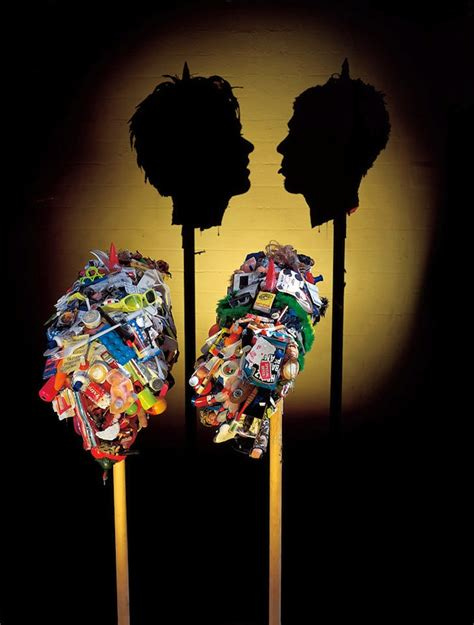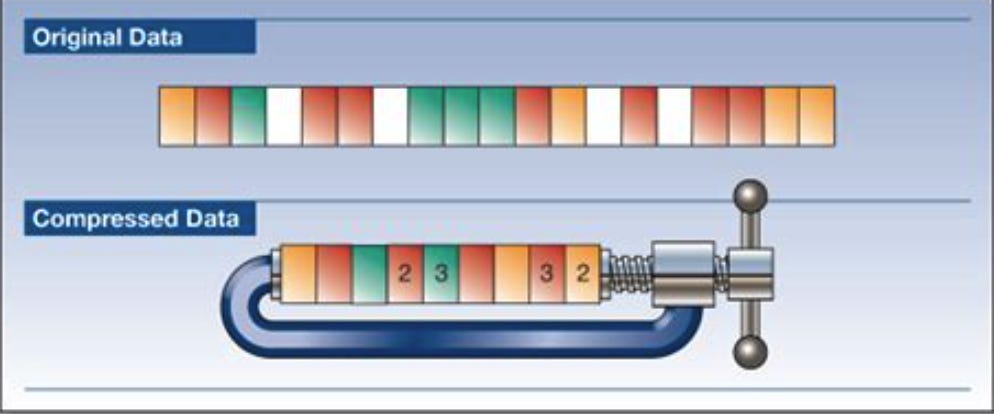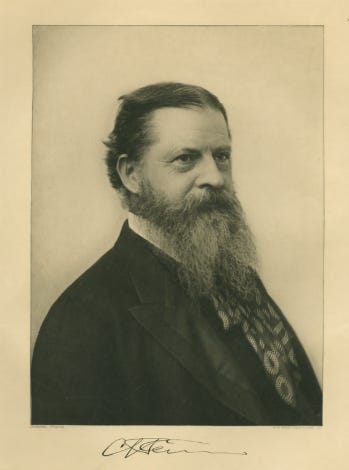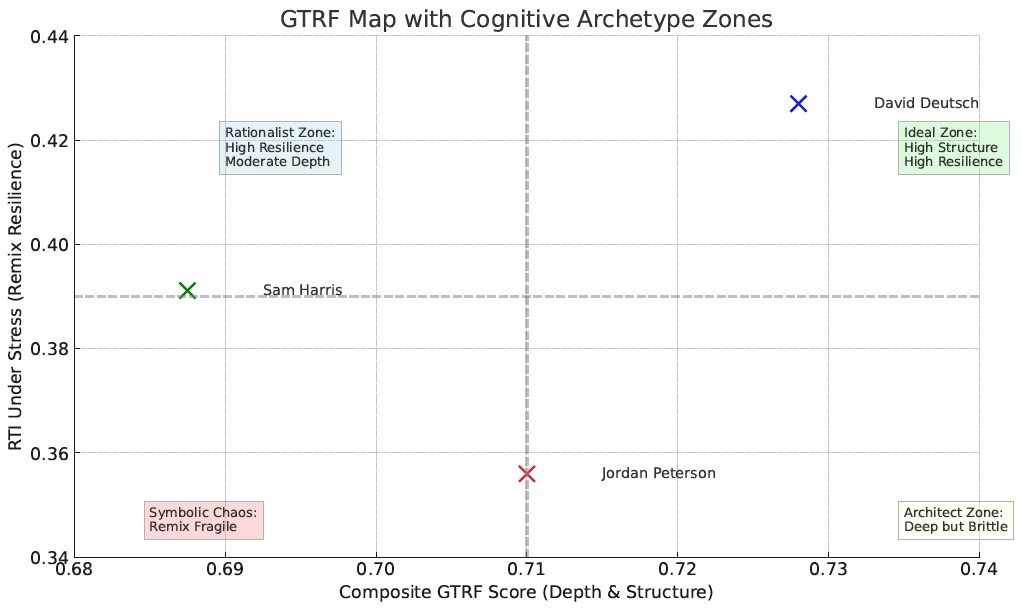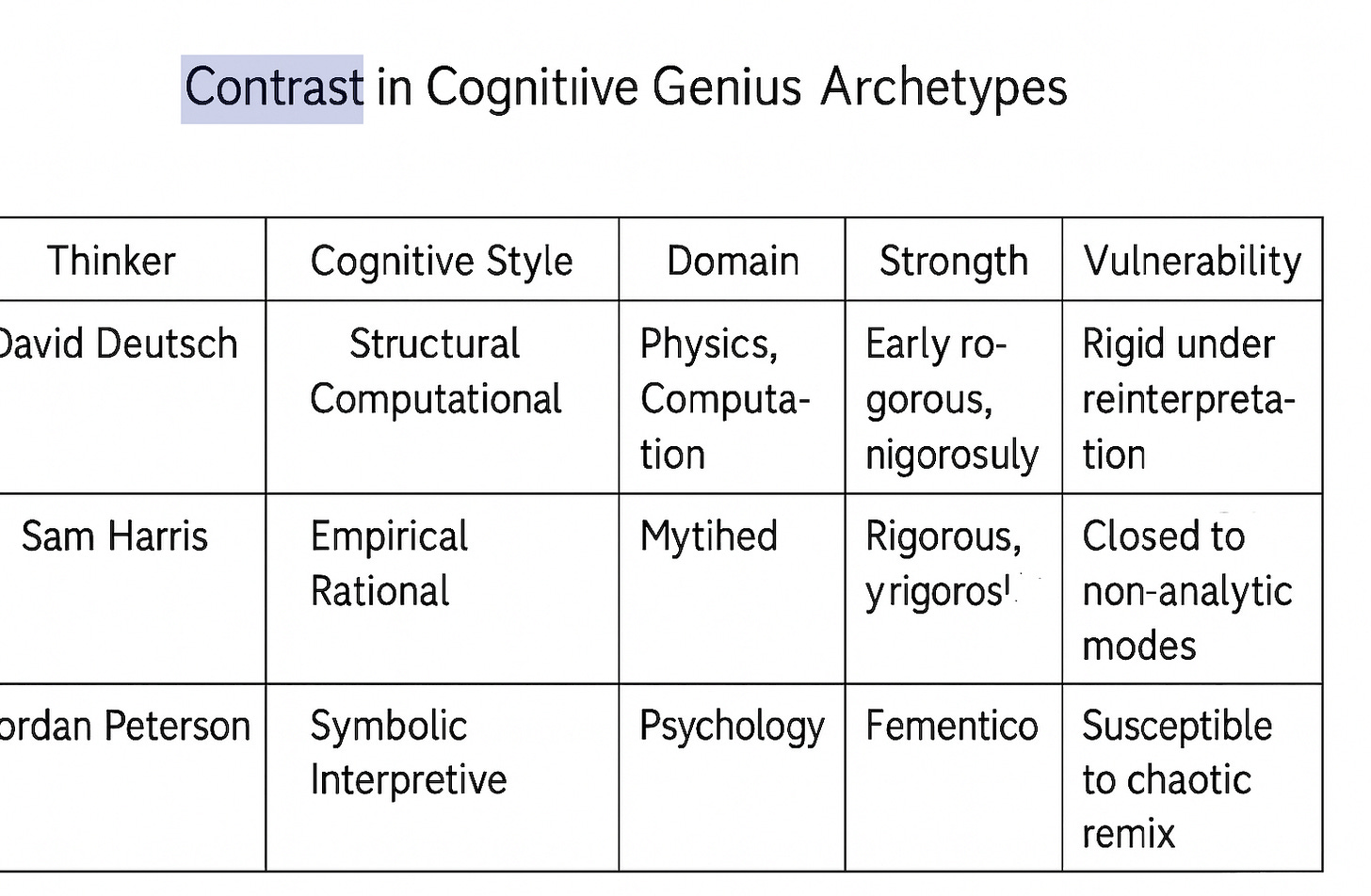The Knife and the Needle Stack
Ideas aren’t rare anymore. Precision is. In a world where AI floods every inbox with brilliance, we don’t need more ideas—we need a way to trust them.
Wayne Boatwright — Building Tools for the Uncharted
I don’t write to give you answers. I build instruments. These are tools for thinking that help you navigate the places where old maps fail.
These tools are born from years spent dismantling and rebuilding my own mind, learning to separate the maps we inherit from the territory we actually live in. They’re not meant to be admired on a shelf. They’re meant to be used and tested against your own life, bent under pressure, and kept only if they hold.
Some are compasses for finding clarity when truth feels slippery. Some are knives for cutting through noise to what endures. All are built for the same purpose: to help you think in ways you didn’t know you could.
If you’ve felt the ground shift under your assumptions, you’re in the right place. The known world ends here. Pick up a tool. Let’s see what survives the journey.
Genius Isn’t a Trait. It’s a Transmission Problem.
We used to hunt for genius; buried, obscure, easy to miss. Now? Machine intelligence delivers idea after idea, each with the flash of brilliance. Sharp turns of phrase. Big metaphors. Bold claims.
But most of them don’t hold.
We don’t lack flashes of brilliance. We’re flooded with them. What we lack is a structure to tell signal from spectacle. In a culture addicted to speed and allergic to contradiction, the best ideas don’t rise. They get buried again; this time under applause, trends, or premature dismissal.
Hooke’s flea (Micrographia, 1665)—what it means to actually “see.”
Sometimes, it takes a different kind of vision. Not to invent, but to finally see what’s been overlooked.
Robert Hooke (1635–1703) was not just a scientist or inventor. He was a master of perception, a man whose genius lay in seeing what others could not. In a world where countless eyes had gazed at sparks, fleas, raindrops, and the moon, Hooke was the first to truly see them, revealing hidden worlds through the lens of his microscope. His 1665 book, Micrographia, opened up a universe of intricate structures and living forms, inspiring generations to look closer and question deeper.
Neal Stephenson, in his novel Quicksilver, captures this essence of Hooke’s vision. Through vivid scenes and dialogue, Stephenson shows Hooke’s fascination with the natural world and his frustration with the imperfections of human-made objects. In one memorable passage, Hooke remarks, “True beauty is to be found in natural forms. The more we magnify, and the closer we examine, the works of Artifice, the grosser and stupider they seem. But if we magnify the natural world, it only becomes more intricate and excellent.” Stephenson’s portrayal underscores that genius is not always about invention. It is about the precision of perception, the discipline to notice more, not add more.
Hooke’s mastery was not magic, but the result of relentless curiosity and skill; an ability to manipulate angle, focus, and light until the invisible became visible. His legacy reminds us that the greatest breakthroughs often come not from creating something new, but from finally seeing what has always been there.
What can a genius find?
Hooke coined the term "cell" after observing the microscopic structure of cork in his book Micrographia (1665), marking a foundational moment in biology and the development of cell theory.
Hooke was a pioneer in microscopy, designing improved microscopes and making detailed observations of microscopic organisms and structures, including the first recorded observation of a microorganism.
In 1672, he discovered the phenomenon of light diffraction and proposed the wave theory of light.
In 1660, he formulated the law of elasticity, stating that the extension of a spring is proportional to the force applied, a principle now known as Hooke’s Law.
“Hooke has perceived things that no man before has ever perceived. You are the millionth human to look at a spark, a flea, a raindrop, the moon and the first to see it.”
Genius isn’t just invention. It’s can be about precision of perception. Not adding more, but noticing more. Not magic, but mastery of angle, focus, and light. This framework doesn’t chase brilliance. It tests it. It’s a cognitive instrument for harsh environments—where ideas live or die not by polish, but by pressure.
Original Drawing of Hooke’s Compound Microscope (Micrographia, 1665)
This engraved illustration from Robert Hooke’s Micrographia (1665) depicts the compound microscope he used to make his landmark observations. The design includes a long barrel, a stage for specimens, and an adjustable mirror for light capture; an early but sophisticated optical tool. This drawing isn’t just technical. It’s philosophical. Hooke’s microscope didn’t merely magnify objects; it redefined the scale of human perception. What had once been invisible became observable, measurable, nameable. The image stands as a symbol of genius not as invention, but as disciplined perception.
My Path to the Framework
I was first exposed to Decision Intelligence (DI) thanks to the generosity of its creator, Lorien Pratt. She allowed me to sit in on one of the earliest Quantellia courses: Introduction to Decision Intelligence: Including Decision Simulation for the Enterprise. That experience embedded the discipline’s core principles into my thinking: causal modeling, simulation, trade-off navigation, and feedback loops. DI offered more than analysis—it was engineering for cognition.
Why bring up Decision Intelligence at all?
Because it asked the same question I was asking just in a different key. DI didn’t aim to spot genius. It aimed to clarify action. But its method (causal modeling, simulation, feedback) offered something rare: a way to test ideas under stress. Not charm. Not consensus. Consequence. It built structure around judgment. That’s when I saw the link. If DI could pressure-test decisions, could we build something to pressure-test ideas?
What Is Decision Intelligence?
Coined by Lorien Pratt in the early 2000s, Decision Intelligence (DI) is a discipline that blends data, models, and human judgment into structured decisions. It asks not just what is true, but what should we do about it?
DI operates like engineering for thinking:
Define the outcome
Map the causes
Simulate possible actions
Monitor results and refine
It’s not intuition versus data. It’s structured intuition with feedback loops.
The DI framework emphasizes causal relationships by using Decision Models built from levers (actions), intermediates (causal pathways), and outcomes. These form the basis of Causal Decision Diagrams (CDDs). My new tool applies this logic upstream. Not just to actions, but to ideas themselves. It simulates how ideas behave as if they were agents in a decision model: prone to distortion, remix, resistance, and decay.
📌 📘 What is GTRF?
Genius Transmission & Recursion Framework (GTRF)
GTRF is a diagnostic system designed to evaluate the structural integrity of ideas; not based on charisma or virality, but on durability under pressure.🧠 Built on Decision Intelligence principles, GTRF simulates how an idea; whether a framework, metaphor, or model performs when distorted, challenged, or remixed across contexts.
GTRF doesn’t ask who said it. It asks what survives.
Use Cases:
Test frameworks in product strategy, leadership, or communication.
Score insight density in your own ideas or writing.
Evaluate public thinkers for long-term epistemic utility.
📈 Want to go further? You’ll find a live scoring guide at the end of this piece and a beta access option for practitioners.
I’ve been hunting genius for years; chasing minds that shift frames, not just fill them. No credentials. No lab coat. Just libraries, browser tabs, interviews, and a compulsion to follow strange, strong signals. My early instinct was to spot the signal through raw intuition, like a jazz critic or a boxing coach. But as the volume of ideas grew, instinct failed. I needed a structure. That’s when I found Decision Intelligence.
Then came GPTs. And with them, a new tool: the ability to test intuition with mathematical rigor.
I built my variation of DI: the Global Tensor Resilience Framwork (GTRF), to ask harder questions of ideas, not people. GTRF is applied epistemology: a structure for compressing brilliance without losing durability. It’s not a detector of talent; it’s a pressure chamber.
What makes an idea survive pressure?
GTRF is the bridge between human judgment and machine structure, between intuition and measurement. It doesn’t just find genius. It discovers what consensus dismisses and proves what instinct only suspects.
GTRF works in two directions: it can assess an individual’s cognitive architecture through their ideas, or evaluate a single idea on its own terms. It doesn’t measure charisma. It measures transmission: what survives distortion, contradiction, and time. In the following examples, I’ve used the tool on thinkers. But GTRF is agnostic to the source. It can be applied to a framework, a meme, a model, or a metaphor. Anything that claims insight and seeks survival.
Introducing the Genius Transmission & Recursion Framework (GTRF)
GTRF is a five-part diagnostic for evaluating whether a theory, idea, or model operates at the level of genius, not by reputation, but by behavior under stress. It doesn’t just measure thinkers. It measures thought. Whether it’s a person, a framework, or a fragment of code, GTRF tests for what survives translation, contradiction, and time. The tool is agnostic. The test is not.
It’s not about who said it. It’s about what it does, how far it travels, and how well it survives translation. GTRF treats ideas as decision agents: they must survive transmission, recombination, and recursion. The goal isn’t applause. It’s persistence.
[SEE APPENDIX FOR THE RECURSIVE TENSOR COGNITION MODEL, INSPIRED BY WORK IN A PRIME-INDEXED DYNAMIC SYSTEM: I’m not a math wiz - I’ve got a math savant for the functions and model. They have been tested using established mathematical tools (Lyapunov functions, spectral radius, etc.), which are standard in control theory and dynamical systems. The equations for cognitive and linguistic tensors are shown to be stable and convergent under specified parameter regimes, with clear reference to classical results in operator theory and functional analysis.]
Each GTRF metric aligns with a principle of Decision Quality:
IEP (Information Explanatory Power) = Meaningful Information, Creative Alternatives - Can the idea explain more with less?
ERI (Epistemic Resilience Index) = Logically Correct Reasoning over time - Does it endure contradiction and exception?
IV (Interpretive Valence) = Clear Values and Trade-Offs - Does it work across the objective, social, and psychological realms (Jordan Peterson’s triad)?
MM (Mathematical Mappability) = Appropriate Frame + Testability - Can it be modeled or simulated
RTI (Remix Transmission Index) = Commitment to Action through cultural survival - Can the idea be misunderstood and still deliver useful results?
Where DI models decisions, GTRF models ideas. Ideas are treated like intermediate outcomes—affected by levers (input distortion), intermediates (symbolic clarity), and outcomes (goal alignment, regret, and transfer).
Let’s break it down:
GTRF Metrics in Full
📌 🔍 Why GTRF Now?
In a world where every scroll brings another brilliant insight, it's no longer hard to find sharp ideas. It's hard to find ones that survive. GTRF was built for this moment—where judgment is drowned by velocity.
Today, GTRF is being explored by:
Designers scoring frameworks for strategic clarity.
Researchers filtering high-signal hypotheses from conceptual noise.
Product teams testing the strength of core product metaphors and mental models before launch.
Founders and thought leaders stress-testing their narratives for coherence and cultural survival.
When every inbox is a firehose of genius, we don’t need more sparks.
We need a structure to know what cuts.GTRF isn’t a detector of genius. It’s a crucible.
1. IEP – Instrumental Explanatory Power
Can the idea explain more than one domain? Can it do real work?
IEP tracks whether the idea expands understanding and makes action easier. In tensor terms, it’s the convergence rate of a recursive state under noise. The faster the system stabilizes despite distortion, the higher the IEP.
D (Domain Reach)
G (Goal Enablement)
C (Complexity Penalty)
2. ERI – Epistemic Resistance Index
Has the idea endured resistance without being refuted?
Some ideas are ignored not because they’re wrong—but because they’re too early. ERI filters those.
Y (Years of resistance)
A (Effective counter arguments)
3. IV – Integration Vector
Does the idea carry meaning across all three of Peterson’s domains?
Known – Rational, procedural
Unknown – Symbolic, emotional
Conjunction – Emergence
Scoring:
5 = full-spectrum coherence
3 = functional + 1 other
1 = single-layer
4. MM – Measurement Maturity
Can the idea be refined, critiqued, or tested?
Rooted in Plato’s art of measurement and formalized in DI as testability, traceability, and causal transparency.
High-MM ideas survive challenge and improve under scrutiny.
5. RTI – Recursion & Transfer Index
Can the idea survive remix and meme warfare?
We no longer share ideas. We remix them. RTI tracks fidelity across distortion, translation, and cultural reframing.
5 = survives distortion
3 = needs correction
1 = collapses under remix
GTRF and DI: Model, Simulate, Monitor
Where DI defines levers and outcomes, GTRF uses:
Levers: Cultural triggers, narrative frames
Intermediates: Symbolic clarity, coherence (Ξ)
Outcomes: Strategic regret, transmission, goal alignment (Π)
In Phase B, we model explanatory power and symbolic reach.
In Phase C, we simulate noise, contradiction, and adaptation.
In Phase D, we monitor fidelity and trace the idea’s transmission loss.
Genius isn’t charisma. It’s recursive survival.
Case Study 1: Marshall McLuhan
The first time I encountered McLuhan, I pulled a forgotten paperback off a shelf; The Gutenberg Galaxy: The Making of Typographic Man, published in 1962. It had never been checked out.
And yet, it reads like prophecy.
McLuhan didn’t just describe media. He diagnosed it. He argued that the tools we use to communicate reshape not just our culture, but our cognition. Literacy, electricity, screens, each rewire how we think, feel, and build meaning.
He coined "the medium is the message," but what he meant was deeper: technology changes the brain before it changes behavior.
What McLuhan saw in the electric age (feedback loops, velocity, pattern over content) exploded in the digital age. The internet didn’t disprove him. It proved him louder.
In GTRF terms:
IEP: High. His theories map across media, sociology, cognition, and design.
ERI: High. He was dismissed as a crank in his time.
IV: High. He bridged poetry, science, and theology.
MM: Moderate. Fuzzy on measurement, but sharp on conceptual precision.
RTI: Extremely high. His ideas thrive in meme form.
He wasn’t building gadgets. He was charting the weather system of thought.
McLuhan passed ERI and IV. Failed MM. Aphorisms survive; his structural models do not. High cultural valence, low mathematical clarity.
Case Study 2: David Deutsch
If McLuhan showed us that the medium shapes our mind, Deutsch showed us that explanation is the core of human progress.
In The Fabric of Reality and The Beginning of Infinity, Deutsch built a theory of knowledge that treats ideas as testable software, not beliefs to be held. He fused Popperian fallibilism with quantum physics, computation, and scientific realism.
He doesn’t just say that knowledge evolves. He shows how it evolves when we embrace error, explanation, and recursion.
In GTRF terms:
IEP: High. His epistemology spans physics, AI, decision theory.
ERI: Medium. He’s celebrated now, but his core ideas are still under-applied.
IV: High. He spans the rational, the metaphysical, and the moral.
MM: Very high. His theories are falsifiable, recursive, and precision-tuned.
RTI: Strong. His ideas thrive in remix culture, especially among technologists and philosophers.
Deutsch proves that genius isn’t just about knowing. It’s about building better explanations that survive reality testing.
"Genius isn't about cleaning the mess. It's about orienting it. When the light is right, the shadow tells the truth."
Deutsch passed IEP and MM. Prioritized explanatory power over persuasion. Moderate RTI due to precision loss in casual discourse.
Figure 1. Shadow sculpture by Tim Noble and Sue Webster. Disorder in form, coherence in projection—what appears chaotic becomes meaningful when lit with precision.
The GTRF isn't here to rate ideas. It’s here to push them into evolutionary contact with contradiction, mutation, and time.
The ones that last? They earn it.
The Knife Is for Cutting
Ideas survive in harsh environments when they’re built for stress. A good idea gets sharper under pressure. A weak one frays.
So we ask:
Can it compress?
Can it recombine?
Can it explain across layers?
Can it map?
Can it fail and still be useful?
The knife is for cutting. The needle stack? That’s every flashy, viral, noisy distraction that didn’t make it through.
This isn’t about being right. It’s about staying useful.
And the only thing sharper than the idea itself is the test you put it through.
The Art of Measurement
We used to search for genius like a needle in a haystack; something rare, fragile, and buried in noise. You needed expertise, patience, and silence to even have a chance of spotting it.
Now, machine intelligence delivers needle stacks. Every query brings a thousand needles. The problem isn’t finding something sharp. It’s knowing which one cuts clean.
The danger? People mistake what’s visible for what’s viable. When everything looks like insight, nothing is.
That’s why measurement matters more than discovery. Genius isn’t what floats to the top of the feed. It’s what survives the cut.
Genius is not always in what is added, but in how the mess is lit. Like Tim Noble and Sue Webster’s shadow sculptures, the right light, cast on apparent disorder, reveals unexpected coherence. But even when the mess is lit just right, we still misread what we’re seeing.
We inherit two bad habits:
Believing genius looks like charisma
Trusting complexity as a proxy for depth
The Greeks had a different standard. Plato’s “art of measurement” was his way of saying: clarity is the ability to distinguish what appears urgent from what actually matters.
“The art of measurement would make the appearances lose their power and show us the truth.” — Plato
Robert Pirsig, in Zen and the Art of Motorcycle Maintenance, carried this forward. He didn’t teach logic. He taught quality—what it feels like when something is right, even before it’s explained.
For me:
“We use THE KNIFE (Tool) in the ART OF MEASUREMENT (Critical thinking) to battle with FORTUNA and SAPIENTIA.”
In this frame, FORTUNA is not just luck. It’s chaos, volatility, the unpredictable roll of history. SAPIENTIA is not just wisdom. It’s coherence under pressure, the kind of judgment that survives noise.
This isn’t just metaphor. It’s a decision loop: knife meets chaos, and only what is shaped by clarity, what holds its form under compression/distortion, advances.
We need to acknowledge something that rarely gets said: for most people, admitting they're wrong isn't just difficult, it's almost existential. To surrender a belief is to rewrite identity, not just logic. That's why most belief systems endure not because they work, but because they persist.
Then comes Charles Sanders Peirce, who mapped four ways humans settle belief:
Tenacity – Hold on, no matter what
Authority – Believe what you’re told
A Priori – Trust your gut
Science – Build and destroy via evidence
“The irritation of doubt causes a struggle to attain a state of belief. I shall term this struggle inquiry.” — Peirce
The GTRF tool is built in that spirit. Not to reward polish. To reward ideas that hold their shape under contradiction.
Not the loudest. Not the most beautiful. The most stable under strain. The idea that orients before it persuades. The one that, when stripped of charisma, still cuts clean. That’s what the GTRF is built to find; not brilliance in the moment, but durability across moments. Genius is not the signal. It’s the structure that holds when the noise arrives.
The Genius of Compression
We live in a time when pattern recognition has gone planetary. Quentin Hardy, former Deputy Technology Editor at The New York Times and Head of Editorial at Google Cloud—put it this way:
“Just as the telescope/microscope led to a greater sense of the physical and biological worlds as hierarchies of order, the broader pattern-finding of AI will lead to a greater sense of the world as large ecosystems, interactions, and complexity.”But emergence isn’t the goal. It’s the background hum. The real question is: who can see it first, frame it clearly, and make it usable?
That’s what GTRF is built for.
But as scale increases, so must compression. Jordan Peterson explains:
“We must abstract and simplify to survive. But the best simplifications still point toward the structure of what is real.”
This is what genius must do now: encode high-order reality into forms that survive interpretation. Compression isn’t decoration. It’s survival. If your insight can’t travel, it can’t live.
The GTRF doesn’t just verify insight. It tests information density under duress. The ability of an idea to stay true while being simplified, repurposed, misquoted, and reused.
Hooke didn’t invent the cell. He saw it; then named what others had missed. That’s the original cut: perception as selection.
Genius isn’t just vision. It’s compression that holds.
Case Study: GTRF Contrast — Deutsch, Peterson, Harris
To test the full power of the GTRF, we charted three public intellectuals (David Deutsch, Jordan Peterson, and Sam Harris) on a two-axis survival map: Composite GTRF Score (x) versus Recursion & Transfer Index (RTI, y).
Each thinker represents a distinct cognitive survivability profile:
David Deutsch sits in the Architect quadrant: high composite coherence, moderate cultural transfer. His strength is explanatory depth. His weakness? Portability—his ideas need careful framing to avoid distortion.
Jordan Peterson occupies the Symbolic Compression zone: high integrative value and cultural recursion, but lower measurability. His ideas survive through metaphor and story. They spread fast, but resist clean quantification.
Sam Harris stands in the Precision Edge: high testability, disciplined clarity, but limited mythic traction. He scores well under DI principles, yet his ideas are more fragile in meme warfare.
🗺️ See full map in Figure 1: “GTRF Intellectual Survival Terrain”
This contrast shows that “genius” isn’t one thing. It’s where and how an idea survives: in symbols, in systems, or in simulation.
In an age of distortion, the real test isn’t polish. It’s what still stands when the noise hits.
Belief Under Pressure
Before we measure an idea, we have to face a basic truth: belief isn’t just cognitive. It’s adhesive. People don’t change their minds because evidence improves. They change because the cost of staying wrong gets too high.
Charles Sanders Peirce saw this clearly. In his 1877 essay The Fixation of Belief, he sketched the mechanics of how humans settle opinion. Not by reason alone, but by instinct, coercion, habit, and finally, evidence. Long before we had terms like “epistemic resilience” or “remix survival,” Peirce mapped the terrain: doubt irritates, inquiry begins, and belief gets fixed; not always by truth, often by pressure.
We inherit four strategies, Peirce said:
Tenacity – Hold on, no matter what.
Authority – Believe what you’re told.
A Priori – Trust your gut.
Science – Build and destroy through evidence.
But before we get to Peirce’s solution, we have to admit the resistance: For most people, admitting they’re wrong isn’t just hard—it’s existential. To surrender a belief is to rewrite identity, not just logic. That’s why most belief systems endure—not because they work, but because they persist.
Peirce called the transition from doubt to belief “inquiry.” We call it pressure.
“The irritation of doubt causes a struggle to attain a state of belief. I shall term this struggle inquiry.” — C.S. Peirce
What do we do with that clarity?
We stop mistaking novelty for insight. We stop confusing volume with value. And we start testing everything that claims genius, whether it’s a theory, a thinker, or a thread. The GTRF isn’t here to anoint. It’s here to expose what lasts.
Because in a world where everything sparkles for a second, survival is the only signal that means anything.
GTRF doesn’t care who said it. Only whether it holds under pressure. That’s why it works across domains: from thinkers to theorems, memes to metaphors. The frame is indifferent. The cut is not.
Think you’ve seen genius? Run it through the knife. If it holds, you’re not guessing anymore. The GTRF is live.
📌 🚀 Get Involved
Want to apply the GTRF to your own work—or test it on thinkers shaping your industry?
We’re piloting GTRF with select strategists, operators, and creators.
🔗 Join the beta – Apply to test GTRF on your own ideas, frameworks, or founder narratives.
🧪 Submit an idea – Send us a framework or mental model to stress-test.→ [nobhillkia@gmail.com]
Precision is the new genius. GTRF shows you what cuts through. Let’s measure brilliance, not just admire it.
APPENDIX
Mathematical Underpinnings of GTRF
[I’m not a math wiz - I’ve got a math savant for the functions and model. They have been tested using established mathematical tools (Lyapunov functions, spectral radius, etc.), which are standard in control theory and dynamical systems. The equations for cognitive and linguistic tensors are shown to be stable and convergent under specified parameter regimes, with clear reference to classical results in operator theory and functional analysis.]
GTRF as Applied Decision Intelligence
The GTRF doesn’t just score ideas. It extends the logic of Decision Intelligence (DI) into the epistemic realm.
Where traditional DI maps variables, scenarios, and outcomes, GTRF asks: what happens to ideas themselves under those same forces?
To make this concrete, DI often operates in defined phases:
Modeling: Defining causal structures and key drivers
Simulation: Exploring how scenarios affect outcomes
Monitoring: Tracking real-world impacts against expectations
GTRF mirrors that structure:
In the modeling phase, GTRF captures domain reach (D), symbolic clarity (Ξ), and regret (Π).
In simulation, it tests distortion, remix, and systemic stress.
In monitoring, it measures fidelity. Meaning how well ideas retain structure over time.
Where traditional DI maps variables, scenarios, and outcomes, GTRF asks: what happens to ideas themselves under those same forces?
In Phase B, we model explanatory power, domain reach (D), symbolic clarity (Ξ), and regret (Π).
In Phase C, we simulate noise, contradiction, and adaptation.
In Phase D, we monitor fidelity and trace the idea’s transmission loss.
Genius isn’t charisma. It’s recursive survival.
If DI helps people make better decisions, GTRF tests whether the idea itself is decision-ready (coherent, transferable, and pressure-tolerant).
This isn’t philosophy. It’s applied epistemology, decision-by-decision.
The GTRF’s five dimensions are more than heuristic. They map onto a recursive tensor cognition model, inspired by work in prime-indexed dynamic systems. Each metric aligns with specific mathematical behavior:
IEP models the stability and utility of an idea under perturbation, as in:
Tₜ₊₁ = Σₚᵢ ∈ Pₙ [Λₘ · pᵢ^α · Tₜ + F(t)]
The greater the idea’s reach and goal impact and the lower its complexity penalty, the more rapidly it stabilizes despite external noise.ERI corresponds to symbolic coherence under pressure, measured as:
C[Ξ(t)] = dΞ(t)/dt − ΛₘMΞ(t) − [M, Ξ(t)]
An idea with high ERI maintains internal structure even under epistemic stress.IV is represented by the CTS stack; clear structure (T_clear), symbolic recursion (Ξ), and strategic direction (Π). Each maps to one of Peterson’s cognitive realms: Known, Unknown, Conjunction.
MM maps to an Integrity score:
I[Tₜ] = α₁·||T_clear||⁻¹ + α₂·||C[Ξ(t)]||⁻¹ + α₃·Regret(Π(t))
The more coherent, testable, and regret-aware an idea, the more mature its measurement profile.RTI reflects recursive adaptability:
Π(i,j)(t+1) = E_{Ξ(t)}[Π(i,j)(t)]
A genius-level idea adapts to cultural remapping while conserving its internal architecture.
This mathematical scaffold doesn’t replace judgment. It makes judgment observable, repeatable, and open to challenge.
1. IEP – Instrumental Explanatory Power
Can the idea explain more than one domain? Can it do real work?
IEP tracks whether the idea expands understanding and makes action easier, formally, how it behaves under stress. In tensor terms, it’s about the convergence rate of the recursive state Tₜ in the presence of forcing noise F(t). Domain reach and goal enablement contribute to stability; complexity adds resistance. The faster the system stabilizes despite noise, the higher the IEP.
D (Domain Reach): How many fields does it clarify?
G (Goal Enablement): Does it help solve problems or build tools?
C (Complexity Penalty): Is it bloated, fragile, or obfuscated?
IEP=(D×G)/CIEP = (D × G) / C
Genius should not confuse. It should clarify and perform.
2. ERI – Epistemic Resistance Index
Has the idea endured resistance without being refuted?
Some ideas aren’t adopted because they’re wrong. Others aren’t adopted because they’re too early. ERI distinguishes between the two.
Y (Years of resistance)
A (Effective counter arguments)
ERI=Y/AERI = Y / A
High ERI signals something important: rejection isn’t always proof of error.
3. IV – Integration Vector
Does the idea carry meaning across all three of Peterson’s domains?
Known: Procedural, functional, rational
Unknown: Emotional, symbolic, narrative
Conjunction: The emergent space where opposites inform each other
A genius-level idea must hold coherence across this full stack. One-dimensional insights don’t survive the field.
Scoring:
5 = full-spectrum meaning
3 = functional plus one other
1 = fragile in new frames
4. MM – Measurement Maturity
Can the idea be refined? Critiqued? Tested?
Plato's Knife separates what can be reasoned from what can only be worshipped. In GTRF terms, that boundary is formalized as an integrity function:
I[Tₜ] = α₁·||T_clear||⁻¹ + α₂·||C[Ξ(t)]||⁻¹ + α₃·Regret(Π(t))
Here, testability, symbolic clarity, and decision regret form the backbone of measurement maturity. A high-MM idea survives refinement; not by resisting it, but by improving through it. Genius invites pressure. It improves under challenge.
High-MM ideas:
Invite reinterpretation
Resist cult logic
Enable measurement without losing their edge
Scored 1–5 on testability, adaptability, and resistance to dogma.
5. RTI – Recursion & Transfer Index
Can the idea survive reframing, remapping, and meme warfare?
We no longer share knowledge. We remix it. Genius that can’t survive distortion dies on contact with culture. RTI tracks how well an idea:
Rewrites itself under stress
Travels across media and frames
Loses fidelity or gains depth when simplified
Scoring:
5 = survives transformation
3 = adaptable with effort
1 = collapses under remix
Here are real-world examples of ideas with high Recursion & Transfer Index (RTI) scores, based on their cross-domain adaptability and resilience:
1. Recursive Algorithms
Tower of Hanoi problem: Its recursive solution (Tn=2Tn−1+1) has been adapted for cognitive studies, computer science education, and even AI decision trees51.
Directory structures: Hierarchical file systems use recursion for navigation, influencing organizational frameworks in biology (taxonomy) and management4.
2. Longevity-Driven Memes
Crying Jordan: Survived 5+ years by morphing from sports mockery to political satire and abstract art, demonstrating meme warfare resilience2.
Nyan Cat: Transitioned from 2011 GIF to cryptocurrency branding and Gen-Z nostalgia symbol, surviving platform shifts (Tumblr → TikTok)2.
3. Recursive Cognitive Structures
Monkeys and humans spontaneously transfer recursive sequence patterns to novel contexts, showing biological basis for RTI-like adaptability3.
4. Mathematical Recursion
Diophantine equations’ recursive properties enable applications in cryptography, network routing, and machine learning optimization53.
These ideas score RTI ≥4 by:
Surviving ≥3 context shifts (e.g., Nyan Cat: art → finance → meta-commentary)
Enabling scaffolding (Tower of Hanoi → AI recursion)
Resisting meme collapse via structural simplicity (Crying Jordan’s template flexibility)
Figure 1: GTRF Intellectual Survival Terrain
Comparative Epistemic Diagnostics – Deutsch, Peterson, Harris
Purpose
This appendix applies the Genius Transmission & Recursion Framework (GTRF) to three intellectually influential figures to contrast how their ideas structurally survive stress, remix, and cultural mutation. Each represents a distinct cognitive archetype:
David Deutsch – Theoretical Architect Formally rigorous, universally extensible (physics, epistemology)
Jordan Peterson – Symbolic Synthesist (psychology, mythology, narrative)
Sam Harris – Rationalist Ethicist (neuroscience, ethics)
🧠 Cognitive Survivability Zones
Architectural - Durable, deep, but remix-fragile - David Deutsch
Symbolic Chaos - Richly integrative, collapses under adversarial remix - Jordan Peterson
Rationalist - Clear, remix-resistant, but narrow symbolic span - Sam Harris
🧭 Interpretation & Takeaways
Deutsch excels in theoretical clarity and testability but loses memetic fidelity when oversimplified.
Peterson blends myth and rationality but suffers under remix stress and symbolic overload.
Harris occupies a middle ground, more remix-stable but less symbolically integrative.


